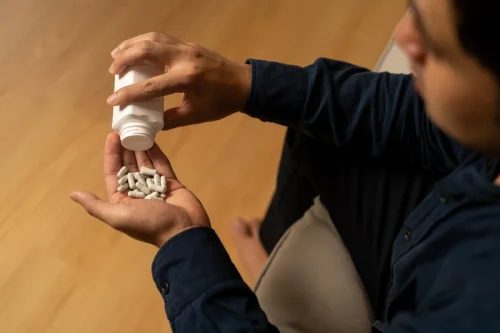
Based on the available pathophysiological and aetiological evidence, alcohol is mainly considered an instant trigger of reflux, rather than a causal risk factor of GORD, and no long-term interventional studies of alcohol abstinence in GORD exist. Total abstinence versus controlled drinking as a treatment goal for the alcoholic is a controversial issue which is currently receiving a great deal of attention. Two opposing camps seem to have evolved over the question and each puts forward convincing arguments essentially representing divergent views on “what is and makes an alcoholic”. Sixteen 113- to 174-word case histories were constructed so that they crossed two levels of problem-drinking severity (low, high), two levels of social support (low, high) and both sexes. In the UK, the two levels of problem severity and social support were validated by asking an independent sample of seven practicing clinical psychologists to read the 16 case histories and rate each on 5-point scales for degree of problem severity and of social support. In both countries, respondents’ mean ratings corresponded to the levels that were intended when the case-history scenarios were written.
Results of additional analysis
Furthermore, younger (under 40), single alcoholics were far more likely to relapse if they were abstinent at 18 months than if they were drinking without problems, even if they were highly alcohol-dependent. Controlled or moderate drinking is usually defined as a problem drinker limiting how much and how often he or she drinks so that there are few, if any, negative drinking-related consequences (Rosenberg, 2002). Research reveals that a substantial subset of both treated and untreated problem drinkers are able to moderate their drinking (Miller, 1983; Rosenberg, 1993; Sobell et al., 1996), and the key question is no longer whether controlled drinking occurs.

Overview of studies
Most U.S. treatment providers still utilize abstinence-focused approaches such as 12 Step Facilitation and AA/NA groups as a mandatory aspect of treatment (SAMHSA, 2017), and while providers demonstrate growing acceptance of controlled drinking, acceptance of nonabstinence outcomes for drug use remains very low (Rosenberg et al., 2020). Furthermore, abstinence remains a gold standard treatment outcome in pharmacotherapy research for drug use disorders, even after numerous calls for alternative metrics of success (Volkow, 2020). Models of nonabstinence psychosocial treatment for drug use have been developed and promoted by practitioners, but little empirical research has tested their effectiveness. This resistance to nonabstinence treatment persists despite strong theoretical and empirical arguments in favor of harm reduction approaches. Additionally, given the nature of the COMBINE study, the effects of a medically oriented intervention (i.e., MM) without a pharmacological component could not be investigated. Furthermore, it should be noted that the literature does not offer consensus on the operational definition of drinking goal (Luquiens et al., 2011).

1.2 Alcohol abstinence
In particular, medically oriented treatments emphasizing abstinence appear to be an effective and cost efficient treatment modality for patients whose goals are oriented toward complete abstinence. Conversely, more intensive behavioral interventions may be particularly beneficial for patients whose goals are conditional abstinence or controlled drinking. On balance, this study is one of the few to empirically examine the effect of drinking goal on treatment outcome, and in particular, matching treatment options to drinking goals. If supported controlled drinking vs abstinence in future studies, these results could be used to inform treatment planning for patients with alcoholism. To that end, an important feature of this study is the accessibility and clinical appeal of the drinking goal measure, which can be readily applied to a wide variety of treatment settings. Together, these analyses seek to further elucidate the predictive utility of drinking goal as well as to identify specific treatment approaches that may be better suited for patients whose goals are abstinence versus non-abstinence oriented.


Instead, the authors categorized responses to the Commitment to Abstinence item based largely on clinical judgment and prior research using this measure. To that end, it should be noted that the distribution of clinical outcomes across the three levels of drinking goal (complete abstinence, conditional abstinence, and controlled drinking) provided strong support for the validity of this coding system. Importantly, clinical assessment of drinking goal is a readily accessible clinical variable which, given the results presented herein, is potentially critical to treatment planning and prognosis.
Quality of evidence evaluation
The Minnesota Model involved inpatient SUD treatment incorporating principles of AA, with a mix of professional and peer support staff (many of whom were members of AA), and a requirement that patients attend AA or NA meetings as part of their treatment (Anderson, McGovern, & DuPont, 1999; McElrath, 1997). This model both accelerated the spread of AA and NA and helped establish the abstinence-focused 12-Step program at the core of mainstream addiction treatment. In a national study of SUD treatment centers that same year, 95% of treatment center administrators reported their programs were based https://ecosoberhouse.com/ on AA’s 12-Step model; demonstrating the wide adoption of AA’s abstinence-focused approach, 90% of administrators indicated that abstinence was the only acceptable goal for recovery from SUD (Miller, 1994). This standard persisted in SUD treatment even as strong evidence emerged that a minority of individuals who receive 12-Step treatment achieve and maintain long-term abstinence (e.g., Project MATCH Research Group, 1998). A focus on abstinence is pervasive in SUD treatment, defining success in both research and practice, and punitive measures are often imposed on those who do not abstain.
Clinical Assessment of Alcohol Use Disorders
The main reasons for having some concerns were lack of description in the randomisation process (39/64 studies) and unbalanced missing data between groups (13/64 studies); and the main reason for high risk of bias (20/64 studies) was missing outcome data. Treatment effects of some studies could be contaminated owing to the open label design or the nature of interventions. These contributed to high risk of bias owing to deviations from intended interventions in two trials. We categorised outcomes (in a slight change from the protocol10) into short (3-6 months), medium (6-12 months), and long (12-24 months) term outcomes.
- Additionally, the survey asked about current quality oflife using a 4-point scale as administered by the World Health Organization (The WHOQOL Group 1998).
- Miller, whose seminal work on motivation and readiness for treatment led to multiple widely used measures of SUD treatment readiness and the development of Motivational Interviewing, also argued for the importance of goal choice in treatment (Miller, 1985).
- It is well known to clinicians and researchers in the field of alcoholism that patients vary with respect to drinking goal.
Abstinence was seen as a more preferred goal for women than for men only among lower-severity drinkers and only in the US. Finally, sex differences related to problem severity were also related to drinkers’ level of social support. For instance, among drinkers with lower social support, abstinence was particularly recommended for women with less severe problems, but for men with more severe problems. Some no longer attended meetings but remained abstinent with a positive view of the 12-step programme.
- Importantly, clinical assessment of drinking goal is a readily accessible clinical variable which, given the results presented herein, is potentially critical to treatment planning and prognosis.
- While abstinence refers to behaviour, sobriety goes deeper and concerns the roots of the problem (addiction) and thereby refers to mental and emotional aspects.
- Nonabstinence approaches to SUD treatment have a complex and contentious history, and significant social and political barriers have impeded research and implementation of alternatives to abstinence-focused treatment.
- Additionally, type I error correction was not implemented; therefore caution is warranted when interpreting marginally significant interactions.
- Two opposing camps seem to have evolved over the question and each puts forward convincing arguments essentially representing divergent views on “what is and makes an alcoholic”.
